We Should Maybe Stop Putting Babies in Pumpkins
As a child, I dressed up for Halloween only once.
It looked like this:
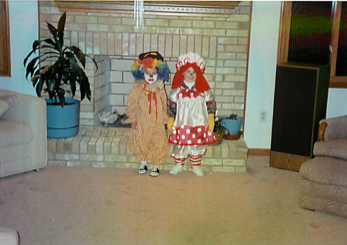
Image Credit: Aubri's Mom
My best friend Al and I were put in matching clown costumes (notice whose parents got into it, and whose found a wig from Grandma's basement...). Our fathers towed us around the neighborhood in a little red wagon, and we ate apple slices while I cowered in fear. We visited a haunted house, my first and last.
This image has a lot of power for me. On one hand, it carries memories of my very oldest friend, a woman whose wedding I witnessed and with whose children will call me “aunt.” On the other [viz] hand, it looks a little like the ghostly grandfather of Pinterest Halloween boards. Right? If Al and I had been born in 2009 instead of 1989, we might have been one of these girls:
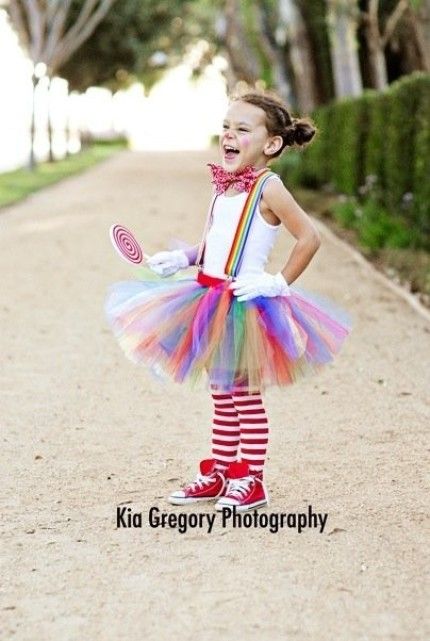
Image Credit: Kia Gregory Photography
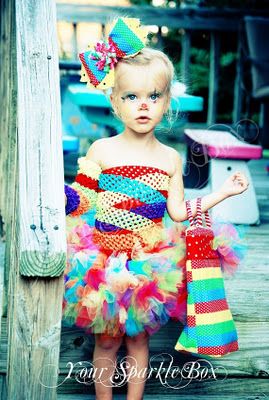
Image Credit: Creating Really Awesome Free Things
Not to knock my mother's costuming ideas, but who doesn't look at these Pinterest-perfect little costumes and go awwwwwwwwww!
They're almost as cute as Carl from Up:
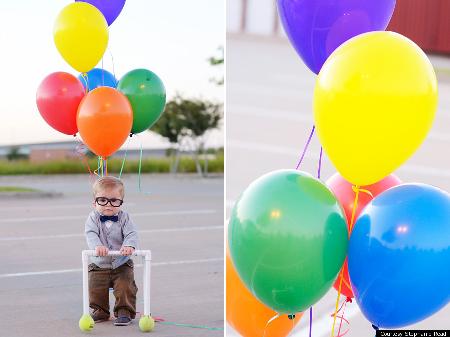
Image Credit: Huffington Post
Do any web search for children's Halloween costumes, and you'll find a slew of brightly-colored, allusive costume ideas meant for infants, toddlers, and pre-teens. The cute factor is off. the. charts.
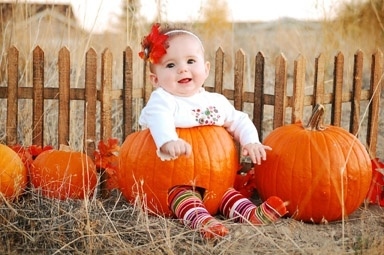
Image Credit: Simply Kierste
It's enough to make me spend time with actual children. Almost.
But Halloween, as it's currently practiced in America (to say nothing of its relation to All Saints' Day and All Souls' Day) is a holiday of consumption. In fact, it has always surprised me that the Hallmark Holiday Haters of Valentine's Day and its ilk haven't yet gone after October 31st. It is, after all, equally commercialized, equally perverted from its original intent, and equally run by corporations like Hershey's, Cadbury, and Victoria's Secret.
What I'm interested in is the way that these images all ask us to view children's bodies. I don't mean to imply that we shouldn't be dressing up our kids for Halloween. I have no baby in that pumpkin, so to speak. I do wonder, though, what kind of consumption these images are asking us to engage. Children's bodies, here on display, now seem to form an entire sub-genre of Halloween consumption. These images are cute because they make some kind of joke or rhetorical point. Carl is darling because the munchkin looks so perfectly like the cartoon character who represents age, the other end of the dependency spectrum; the dozens of babies-in-pumpkins are being associated with growth, with fertility and harvest, at the same time we're reminded that they cannot get out of their pumpkins.
These images remind me of Anne Geddes, this unabashedly creepy photographer who takes pictures of sleeping babies in flowers. Perhaps Anne Higgonet's book Pictures of Innocence, which examines the ways that images of children have been used to figure them as paradoxically pure and, lately, what she calls "knowing," is too far on the forefront of my mind. (Higgonet interrogates the visual depictions of children's costumes, associations with pastoral spaces, flowers, and harvests, and their sexualization.) And sure, there's an obvious and tedious rant about the sexual objectification of pre-teens in Halloween culture somewhere in here. Without going too far down that well-travelled hayride, though, I think it may be useful to examine the lengths to which we're willing to go to get that cute picture, especially because it seems to be the children in the picture, and not the "holiday" itself, that seem to be up for consumption.



Add new comment